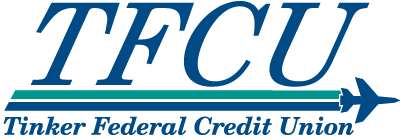When you’re planning for college, the first question is often which school to choose. But equally as important is the question of how you’ll pay for it. That’s why we’ve partnered with Sallie Mae® to bring you their 1-2-3 approach to paying for college. These three steps can help you make more informed, responsible financial decisions for a big investment in your future.
1. Supplement your college savings and income by maximizing scholarships, grants and work study.
Scholarships are offered by colleges and universities, federal and state governments, religious groups, professional associations, employers and other companies. You might think they’re only for academic or athletic accomplishments, but they can be awarded for a number of criteria:
- Organization memberships
- Community leadership
- Financial need
- Ethnic, religious or national background
Apply for scholarships—the earlier, the better, since many have deadlines.
Grants and work study are generally federally funded, so be sure to submit the Free Application for Federal Student Aid (FAFSA) to apply for them. The FAFSA is also used to apply for most state loan, grant, and scholarship programs.
Pell Grants, the largest federal grant program, are based on financial need; unlike a loan, a Pell Grant doesn’t need to be paid back.¹
Work study programs are offered by federal and state governments, as well as schools. They offer part-time jobs that let students earn money to help pay education expenses.
2. After you’ve maximized your free money, consider federal student loans, which are provided by the government. Direct Subsidized Loans are for students with demonstrated need, and Direct Unsubsidized Loans are available regardless of family income.
- You can apply for both by filling out and submitting the FAFSA.
- They’re issued in the student’s name, and the student is responsible for paying them back.
- They’re eligible for income-driven repayment plans that link monthly payments to income.
- Federal loans may be eligible for loan forgiveness programs, such as the Public Service Loan Forgiveness Program for borrowers who are employed by a qualifying public service organization.
3. If you still need additional funds, consider a private student loan. These differ from federal student loans in several ways:
- They’re originated by banks and credit unions.
- They’re credit-based: the lender reviews your credit score and history to determine if you qualify. A cosigner—parent, guardian, or other adult—may improve the chances of approval. Some lenders offer a cosigner release option.
- Your interest rate is based on several factors, including your creditworthiness.
- Private student loans may offer different features, terms and options, and benefits that can help reduce your interest rate and/or total loan cost
¹See https://studentaid.ed.gov/sa/types/grants scholarships#federal for more information. Sallie Mae does not provide, and these materials are not meant to convey, financial, tax, or legal advice. Consult your own attorney or tax advisor about your specific circumstances. Grant, work study, and federal student loan information was gathered on August 15, 2018 from Studentaid.ed.gov. Sallie Mae, the Sallie Mae logo, and other Sallie Mae names and logos are service marks or registered service marks of Sallie Mae Bank. All other names and logos used are the trademarks or service marks of their respective owners. SLM Corporation and its subsidiaries, including Sallie Mae Bank, are not sponsored by or agencies of the United States of America. © 2020 Sallie Mae Bank. All rights reserved. SMPC MKT15448A 0820
